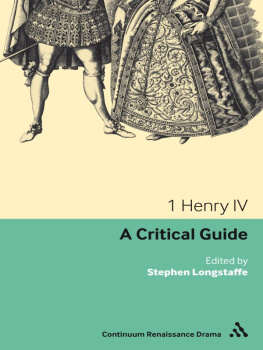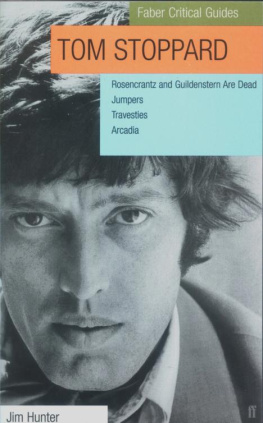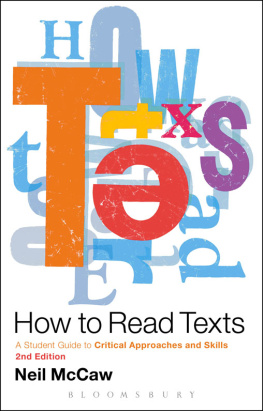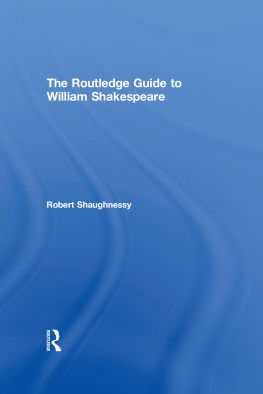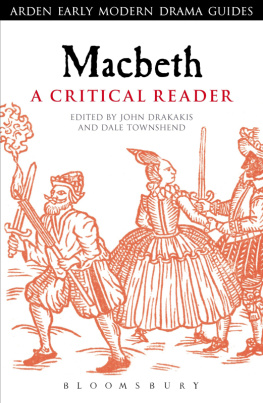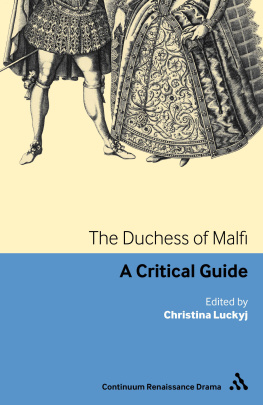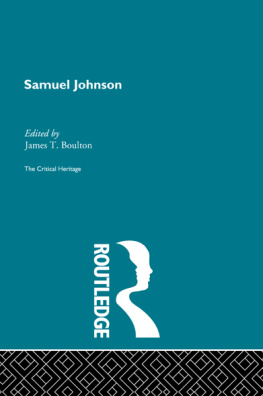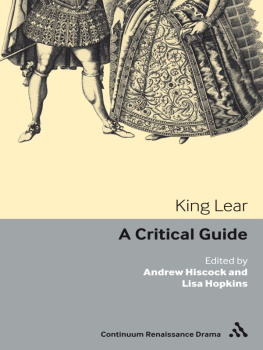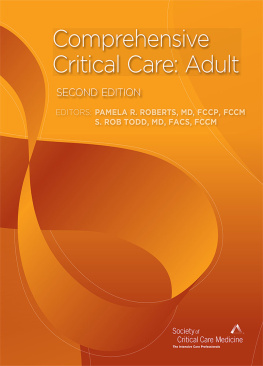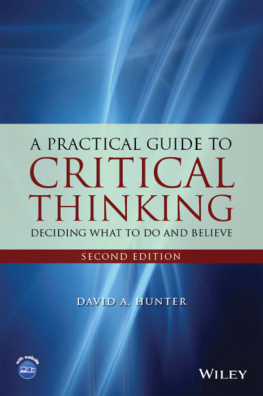1 Henry IV
Continuum Renaissance Drama
Series Editors: Andrew Hiscock, University of Wales Bangor, UK, and Lisa Hopkins, Sheffield Hallam University, UK
Continuum Renaissance Drama offers practical and accessible introductions to the critical and performative contexts of key Elizabethan and Jacobean plays. Each guide introduces the texts critical and performance history but also provides students with an invaluable insight into the landscape of current scholarly research through a keynote essay on the state of the art and newly commissioned essays of fresh research from different critical perspectives.
A Midsummer Nights Dream: A Critical Guide
edited by Regina Buccola
Doctor Faustus: A Critical Guide
edited by Sarah Munson Deats
Duchess of Malfi: A Critical Guide
edited by Christina Luckyj
King Lear: A Critical Guide
edited by Andrew Hiscock and Lisa Hopkins
The Jew of Malta: A Critical Guide
edited by Robert A. Logan
Volpone: A Critical Guide
edited by Matthew Steggle
Women Beware Women: A Critical Guide
edited by Andrew Hiscock
1 HENRY IV
A Critical Guide
Edited by Stephen Longstaffe

Continuum International Publishing Group
The Tower Building | 80 MaidenLane |
11 York Road | Suite 704 |
London SE1 7NX | NewYork, NY10038 |
Stephen Longstaffe and contributors 2011
All rights reserved. No part of this publication may be reproduced or transmitted in any form or by any means, electronic or mechanical, including photocopying, recording, or any information storage or retrieval system, without prior permission in writing from the publishers.
British Library Cataloguing-in-Publication Data
A catalogue record for this book is available from the British Library.
ISBN:978-1-4411-1767-0
Library of Congress Cataloguing-in-Publication Data
A catalog record for this book is available from the Library of Congress.
Contents
Stephen Longstaffe
Edel Lamb
Graham Atkin
Jonathan Hart
Alison Findlay
Chris Fitter
Robert Hornback
Brian Walsh
Martha Tuck Rozett
Series Introduction
The drama of Shakespeare and his contemporaries has remained at the very heart of English curricula internationally and the pedagogic needs surrounding this body of literature have grown increasingly complex as more sophisticated resources become available to scholars, tutors and students. This series aims to offer a clear picture of the critical and performative contexts of a range of chosen texts. In addition, each volume furnishes readers with invaluable insights into the landscape of current scholarly research as well as including new pieces of research by leading critics.
This series is designed to respond to the clearly identified needs of scholars, tutors and students for volumes which will bridge the gap between accounts of previous critical developments and performance history and an acquaintance with new research initiatives related to the chosen plays. Thus, our ambition is to offer innovative and challenging Guides which will provide practical, accessible and thought-provoking analyses of Renaissance drama. Each volume is organised according to a progressive reading strategy involving introductory discussion, critical review and cutting-edge scholarly debate. It has been an enormous pleasure to work with so many dedicated scholars of Renaissance drama and we are sure that this series will encourage to you read 400-year old playtexts with fresh eyes.
Andrew Hiscock and Lisa Hopkins
Timeline
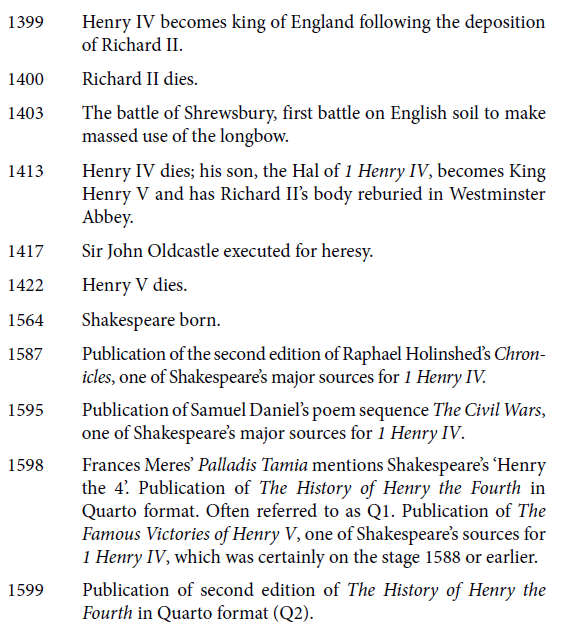
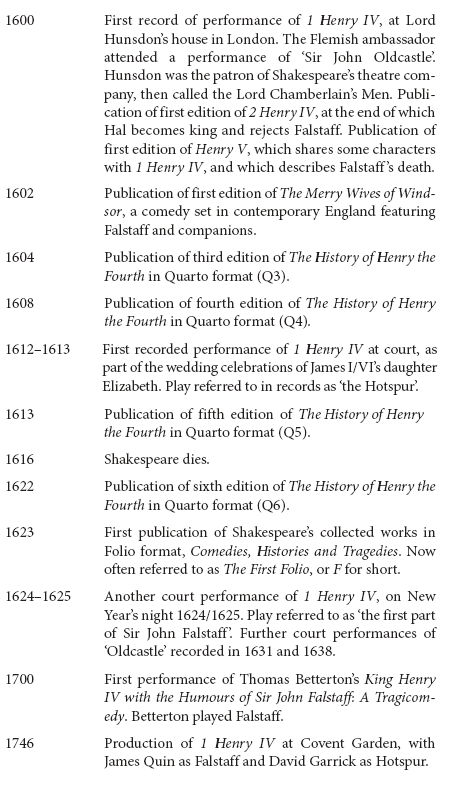
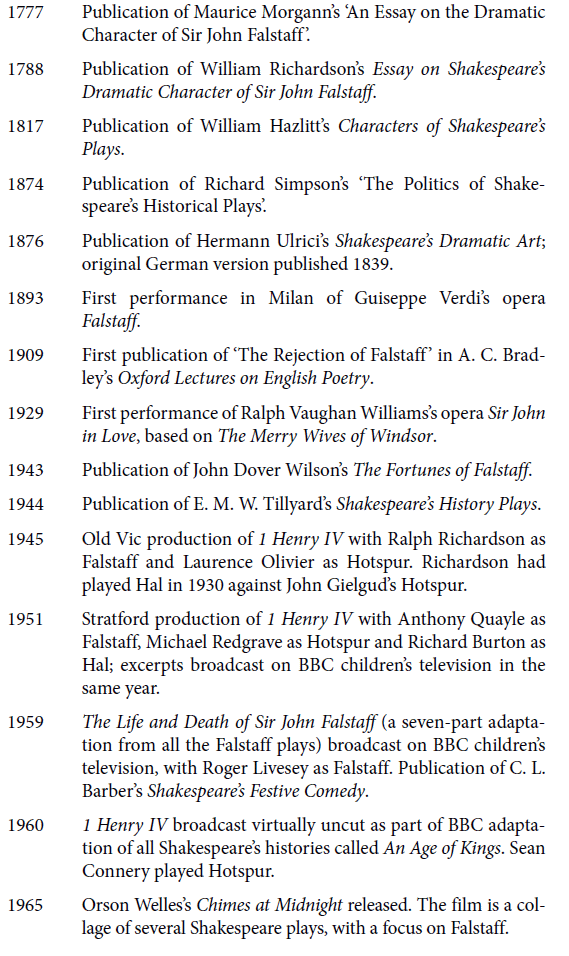
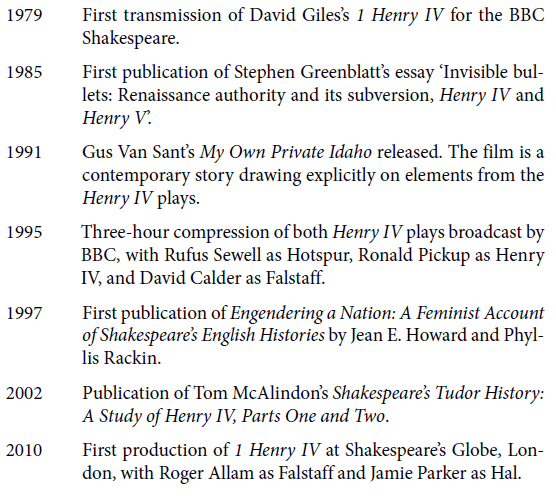
Introduction
Stephen Longstaffe
When they have had enough of serious matters, Shakespeare scholars sometimes play, extempore, a party game. What if ? What would we think of Shakespeare if the First Folio had not made it into print, and we did not have As You Like It, Macbeth, Twelfth Night, Antony and Cleopatra, The Tempest, The Winters Tale, Julius Caesar? What would we think of Shakespeare if we only had five comedies and six tragedies to go on? How would we then feel about Shakespeares extant sequence of seven history plays, beginning with the reign of Richard II and ending with the death of Richard III? And what would we think about Falstaff, who dominates 3 of those 18 plays, giving his name to one of them, and whose death is movingly described in a fourth? We might then still have had a Shakespeare who is pre-eminent in the creation of character but with an achievement weighted rather more towards comic character than currently is the case. We might then still have had a Shakespeare with some claim to be a national poet but with rather more of an interest in the actual history of that nation, as understood in his own place and time, than in human nature. And, in 1 Henry IV, we would still have plenty of evidence that Shakespeare was a theatrical genius.
Shakespeares four most instantly popular plays going through four cheap editions each in their first ten years in print were Pericles, Richard II, Richard III and 1 Henry IV. In other words, to his early readers, Shakespeare the playwright was first and foremost a historian. These three popular histories were all produced, so far as we can tell, during the 1590s, and form the beginning-, mid- and end-point of Shakespeares eight-play sequence on the Wars of the Roses. Richard III, the final play in the historical sequence, was the first of these three to be performed, to be followed by the equally tragic Richard II, chronologically the start of the sequence. Both plays share common sources in the chronicles of Hall (1548) and Holinshed (1587), and are indebted to the mid-century compilation of first-person narrated verse tragedies in which historical persons lament their eventual fates, The Mirror for Magistrates (1559, and subsequent editions), as well as to a range of prior tragic dramas on these and other English kings reigns. They share a narrative arc too, focusing on the downfall (or in Richard IIIs case, the rise and fall) of their principal characters, who get far and away the lions share of the lines spoken.
1 Henry IV deals, as the two others do, with civil war, and ends, as Richard III does, with a climactic battle. It too draws on Holinshed, and shares with Richard II

